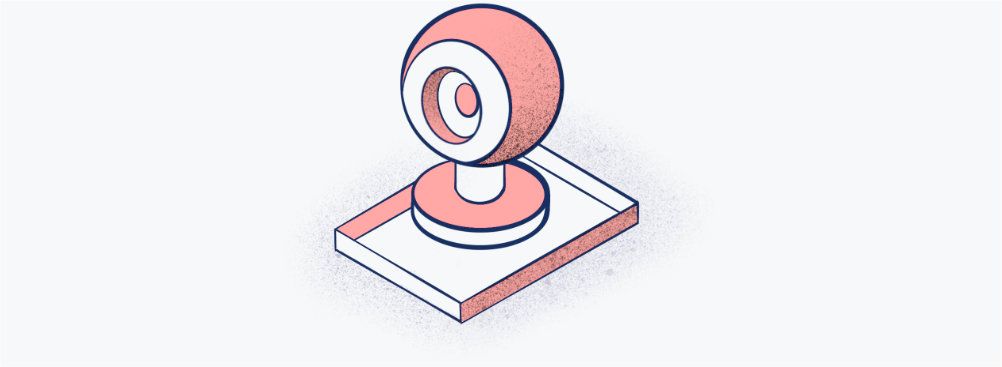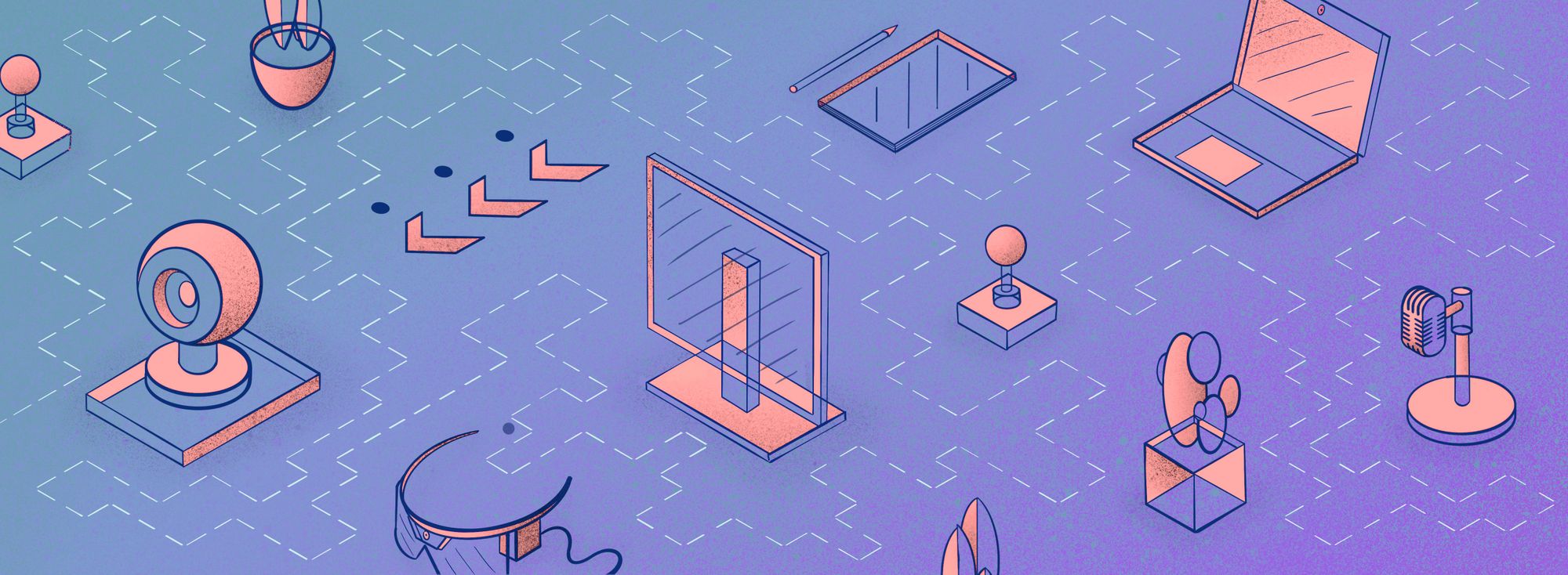In this article, we show you both – the spotlights and the backstage of our work. You’ll see how LB*, a 40-member service design studio specialized in UX research, managed to transform into a remote agency in just a week due to the coronavirus outbreak. All projects running smooth, all teams working comfy from the safety of their homes.
Our UX designer Petra describes the tools and process we utilized to keep the value we deliver to our customers and our marketing manager Dominika follows the radical change to our company setup while keeping the employees motivated and efficient. We hope this diary provides you with a positive perspective for the upcoming future and inspires you in how to cope with the pandemic.
Day Zero
Dominika: The Outbreak
It wasn’t really a scary atmosphere here in central Europe when most of our 40-member studio stayed at home for the first time. It was Friday March 13th and it was freshly considered a pandemic back then. Hence, while seeing the rest of the leads in person for the last time, we decided to strongly support work from home in the upcoming week and see what the situation is about to bring.

A few colleagues had remained isolated in the previous days and we were monitoring the situation rapidly changing in other countries. It was about time to lead by example. We asked Beetles to utilize remote work extensively, to replace face-to-face meetings by video calls and we put together our best practice for teleconferencing. Little did we know it was only a beginning.
Petra: Onboarding
Some say: If you want to make God laugh, tell him about your plans. I rather say: Thank God we can still have plans and a reason to laugh, even in difficult times.
When our business developer Erik approached us with this new project for the first time, it aroused some level of curiosity and expectations in me – this time even more intense than usual. “The deal is to do usability testing for two customer journeys. However, during this Covid-19 situation, the challenge is to set up remote testing…”
After some time of discussing all the points of view, we decided to take a step into the unknown. Before we started, we organized a remote call with the client to learn more about the context of the testing. We asked for their expectations, discussed some fears and hopes and let them show us the concept. Here, the first good sign appeared: we were able to clearly see someone clicking through the prototype by sharing the screen, and hearing them comment on the process at the same time. Our hope was rising.
Day One
Dominika: Collaboration
It’s Monday and the situation has changed rapidly over the weekend. Schools were closed, many people stayed in voluntary quarantine and isolation, businesses started looking for the sweet spot between letting the employees at home and keeping the revenues.
Although we sense the chaos rising around, the only difference for our multidisciplinary teams combined with clients’ specialists is they don’t collaborate in person but transform their sparring and agile rituals to the virtual space. We also managed to do our company-wide standup completely remotely which proved that even large meetings or workshops can work. That’s good news and we even managed to remain our 1-2-3-CLAP ritual!
Petra: Screener & Recruiting
As a next step, it was the time to clearly set who the users were and what kind of respondents we would need for testing the website. For this purpose, we prepared the screener – an understandable user specification. Practically this meant writing down several different attributes (such as age, computer literacy or the level of knowledge / experience in a particular area) that we wanted our respondents to meet at some levels. Then, by creating a simple table we split these to six unique combinations and out of that we created six personal specifications.
We added a few basic information about the dates and estimated durations of the testings and sent this document to our recruitment agency NMS. They are highly experienced in recruiting respondents remotely, so the next day we already had six slots scheduled in our calendars.
Day Two
Dominika: Workspace
Everyone is working from home by now and we understood we wouldn’t be able to predict how long this setup would take. Some Beetles raised struggles with their workspace and work dynamics while isolated with other family members. So our head of HR and LB* partner Marek solved this design challenge just like any other – with his head cool.
He became an official LB* delivery guy and took orders of what people needed from LB* office. And it could be absolutely anything, from displays and devices to plants and office utensils – furniture including. Someone even asked for the bag of coffee grains which would otherwise expire. Making sure everyone’s working in a comfortable environment made us confident we could keep the pace.
Petra: Scenario & Settings
We identified the key user tasks on the website we were about to test. According to that, we created a testing scenario that reflected the main use cases focused on specified goals. We broke these goals into smaller tasks with instructions.
Besides that, we made a simple step-by-step guide for the participants with screenshots of how to connect to the testing. We included the link for the meeting room alongside with the instructions for microphone and camera setting. We sent this to our respondents in advance, so that they could set everything beforehand.

Day three
Dominika: LB* spirit
Although we see a lot of teammates during virtual meetings, we already miss those small talks in the alley. Knowing people will be staying at their homes in the evenings, I didn’t hesitate and scheduled a remote BYOB party for tonight already two days ago. However, there are also these nice little attempts boosting the spirit, e.g. a shared link to a “virtual lunchroom” or posting a picture of the day in a slack thread – once showing your workspace, the next day comparing the way we prepare coffee at home.
Agile ceremonies help a lot. We didn’t really need to learn new rituals than those we already used, but even the internal teams like finance, sales or marketing incorporated them into their daily routine. We utilize them to both keep our work effective and focused and take care of our mental health. You know, sharing is caring.
Petra: Pilot testing
In LB*, we push this learning principle of build–measure–learn, the magic lean UX formula. Also in the case of our testing, we wanted to be sure everything goes right, so we conducted a pilot remote testing with one of our colleagues. Thanks to this, we had a chance to identify the weak spots and to revise each and every detail. The more important your remote activity is, the more we recommend trying it out prior to the event.
Day Four
Dominika: Tensions
It may seem that transforming into a distributed company is easy as ABC. Well, as we were shown by some of our clients it’s not always this comfortable. First, we mostly work with big national companies with hundreds or even thousands of employees. And second, take into consideration that there are new restrictions by the government announced every day.
The best we could do for them at the situation was assuring the product owners, investors and stakeholders we are ready and able to deliver our commitments by 100% in expected deadlines and quality. All the preparations done in previous days helped us gain the confidence and enabled us to share the best practices we already learned with our clients.

Petra: UX testing
So, here we are. Two UX designers, one as a facilitator and one as an observer / note-taker, and a respondent in one call. There was also an open door for the client if he wanted to check on how we were doing.
The structure of the testing was more or less the same with all the respondents: We started with the introduction of LB* and our mission, then we shortly went through the agenda, asked the respondent for a GDPR permission. Then we went ahead with a couple of briefing questions, tasks and overall feedback.
While one of us was asking the participant to complete the tasks from the scenario, the other one was observing, measuring the time and writing the detailed notes into the spreadsheet. After each testing, we went through the notes again and helped each other to complete them in case we missed something.
Then, for each respondent we wrote a short summary, which was helpful later on, while creating the report. We highly recommend doing this kind of debrief right after each participant while it is fresh in your minds, otherwise it is easy to forget important data.
Eventually, we ended up with a spreadsheet table stuffed with lots of insights.
Day Five
Dominika: Perspective
Now when the process runs smoothly and the team seems motivated, what more can we do? Well, wait for how the situation turns out. Or wake up our brains and think of ways we could be helpful. For the business, for the community, for the society.
We had this superquick brainstorming on what we can offer in the times of a pandemic and also individuals joined different initiatives. Life goes on and searching for design challenges that we can impact is now even more important than ever before. So we keep our workshops, we keep doing our weekly LB* Academy and believe in the best – to soon be able to make the world a better place while being able to sit in the same room with the people we love working with.
Petra: Report
Triumphantly, we finished all the calls! Now, only the last part of this remote project is ahead of us: preparing a report. In translation: having a long, long day processing the data, taking screenshots & gifs from video sessions and suggesting solutions. We created a nice presentation in Google Slides which we sent alongside with the video recordings and other documents as an attachment. Our work here is done!
To wrap it all up, here are some overall insights and lessons learned:
1. You can do it all with the “holy trinity” of remote testing
We found these three tools good enough for us to have solid outcomes:
- Google Drive (Docs & Sheets) as an easy collaborative tool for creating materials such as the guide, screener, scenario or notes.
- Google Hangouts Meet for the quality remote calls. It is a stable tool, where the participants are able to easily share their screens.
- Quicktime Player with Soundflower open source extension to record both audio from our microphone and from the respondent.
2. Take advantage of wide scope of respondents and the higher comfort
Even though we find in-person testing very effective, the advantage of doing it remotely is that we can test almost anyone, from all around the country or even the world. It doesn't matter how far away they are. Thanks, dear Internet. Also, it takes much less time / effort spent than inviting the respondents to our office.
What also surprised us in a good way, was that while remote testing, our participants were less distracted by us taking notes. Also, it was easier to clearly see what was going on on their screens without looking from behind their back. People were much more relaxed and confident in their own living rooms, kitchens or even beds.
3. Beware the careless mistakes and take breaks
One big lesson we have learned in this project is to have enough rest. As simple as that. Especially these days while working from home, it is easy to forget to stop working. Make sure you have solid breaks when you put the work away and do something different. When we underestimated this and had two testings in a row, it was really hard for us to focus.
Also, we recommend creating a checklist. For instance, it happened to us that we forgot to start recording the session or to open a scenario document and let the respondent wait. With a simple to-do list you can quickly check if you are all set.
And the last but not least is: remote is possible. Of course, it can happen that some connection issues occur, but don't panic. If anything goes wrong, there is always a way to fix it.
We encourage you to use this time of isolation wisely and to let the new skills and experience grow. If we, as LB*, can help you in any way, let us know. Or check our blog to find relevant content. It’s all based on our experience with lots of practical tips & tricks. And if you have your own proven advice on how to work remotely, do not hesitate to share your learnings. We are in this together! ✊🏻


